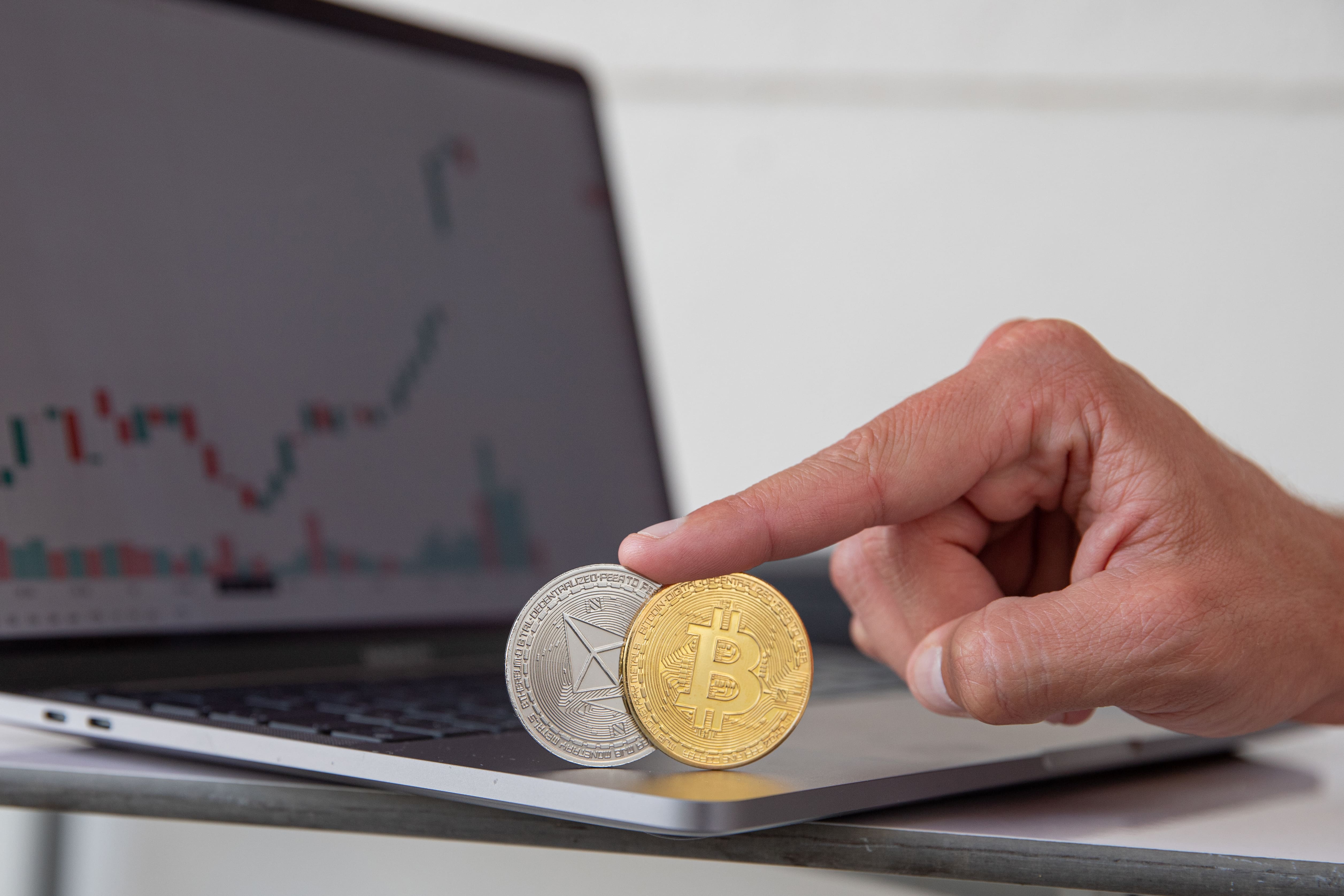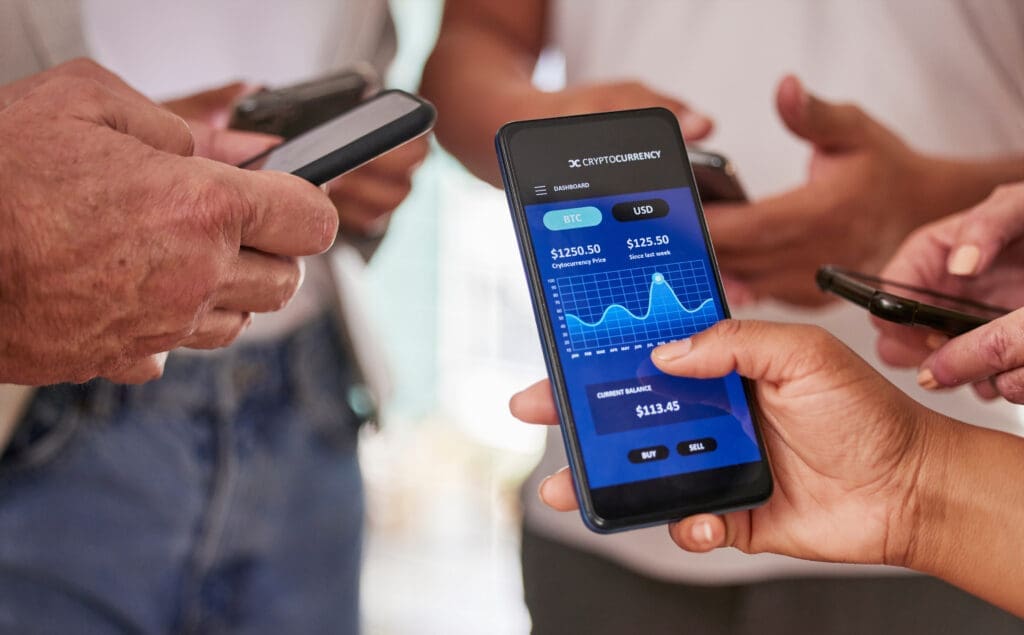In recent years, cryptocurrency has become a buzzword in the world of finance and technology. But what exactly is cryptocurrency, and how does it work? This beginner’s guide aims to provide a comprehensive overview of cryptocurrencies, the technology behind them, and their potential impact on the future of money.

What Is Cryptocurrency?
Cryptocurrency is a type of digital or virtual currency that uses cryptography for security. Unlike traditional currencies issued by governments (like the dollar or euro), cryptocurrencies are decentralized and operate on technology called blockchain.
The Basics of Cryptocurrency
Cryptocurrencies are designed to work as a medium of exchange. They use decentralized control as opposed to centralized digital currency and central banking systems. Each cryptocurrency works through technology called a blockchain, which is a distributed ledger technology enforced by a network of computers.
Understanding Decentralization
Decentralization is a core principle that differentiates cryptocurrencies from traditional currencies. It removes the need for intermediaries like banks, allowing for direct transactions between parties. This can lead to reduced transaction fees and increased transaction speed.
Cryptographic Security
Cryptocurrencies rely heavily on cryptographic techniques for security. These techniques ensure that transactions are secure, private, and unalterable. Cryptography also plays a role in validating and verifying transactions across the network, preventing fraud and double-spending.
Digital vs. Virtual Currency
While often used interchangeably, digital and virtual currencies have subtle differences. Digital currency is a broad term that includes all forms of electronic money, while virtual currency refers specifically to unregulated digital currencies. Cryptocurrencies fall under the virtual currency category due to their decentralized nature.
Popular Cryptocurrencies
Bitcoin was the first cryptocurrency, created in 2009 by an unknown person using the alias Satoshi Nakamoto. Today, there are thousands of alternative cryptocurrencies with various functions and specifications. Some popular cryptocurrencies include Ethereum, Ripple, Litecoin, and Cardano.
Bitcoin: The Pioneer
Bitcoin’s creation marked the beginning of the cryptocurrency era. Its primary function is to serve as a decentralized digital currency, allowing peer-to-peer transactions without intermediaries. Bitcoin’s success has inspired the creation of numerous other cryptocurrencies, each with unique features.
Ethereum and Smart Contracts
Ethereum introduced the concept of smart contracts, which are self-executing contracts with the terms of the agreement directly written into code. This innovation has expanded the possibilities of blockchain technology, allowing for more complex decentralized applications (DApps) to be built on its platform.
Altcoins: Diversity in Functionality
Beyond Bitcoin and Ethereum, there are countless altcoins with varying purposes. Some, like Litecoin, aim to improve transaction speed and efficiency. Others, like Ripple, focus on facilitating cross-border payments. Each altcoin offers unique features, contributing to the diverse cryptocurrency ecosystem.
What Is Blockchain Technology?
Blockchain is the technology that powers cryptocurrency. It is essentially a digital ledger of transactions that is duplicated and distributed across the entire network of computer systems on the blockchain.
How Blockchain Works
Every block in the blockchain contains a number of transactions. Whenever a new transaction occurs on the blockchain, a record of that transaction is added to every participant’s ledger. The decentralized nature of blockchain technology makes it secure and transparent.
Transaction Validation
Transactions on the blockchain are validated through consensus mechanisms. These mechanisms ensure that all participants agree on the validity of transactions, maintaining the integrity of the ledger. Popular consensus mechanisms include Proof of Work (PoW) and Proof of Stake (PoS).
Distributed Ledger Technology
A blockchain’s distributed ledger is a key feature that enhances security and transparency. Unlike centralized databases, blockchain’s ledger is maintained across numerous nodes, making it resistant to tampering and fraud. This distributed nature also ensures that all participants have access to the same information.
The Role of Nodes
Nodes are crucial components of a blockchain network. They are computers that participate in the network, maintaining copies of the blockchain and validating transactions. Nodes work together to ensure the network’s functionality and security, playing a vital role in the decentralized nature of blockchain technology.
Key Features of Blockchain
- Decentralization: Unlike traditional ledgers or databases that are maintained by a central entity, a blockchain is decentralized and distributed across a network of computers.
- Immutability: Once a transaction is recorded in a block, it cannot be altered. This feature provides a high level of security and trust.
- Transparency: All transactions on a blockchain are visible to all participants, ensuring transparency and reducing the risk of fraud.
Decentralization: Independence from Central Authority
Decentralization eliminates the need for a central authority, allowing for greater autonomy and reducing the risk of censorship. This independence makes blockchain technology appealing for various applications beyond cryptocurrency, such as supply chain management and voting systems.
Immutability: Ensuring Data Integrity
The immutability of blockchain records ensures that once data is entered, it cannot be changed. This characteristic is crucial for maintaining data integrity, as it prevents unauthorized alterations and enhances trust among participants.
Transparency: Building Trust
Blockchain’s transparency fosters trust among participants by providing a clear and open view of all transactions. This visibility reduces the likelihood of fraudulent activities and increases accountability, making blockchain a reliable platform for secure and transparent transactions.
How Is Cryptocurrency Created?
Cryptocurrencies are created through a process called mining. Mining involves solving complex mathematical problems to validate transactions on the blockchain.
Cryptocurrency Mining
Miners use powerful computers to solve these problems, and in return, they are rewarded with newly created cryptocurrency. This process is essential for maintaining the integrity and security of the blockchain.
The Mining Process
Mining involves complex calculations that validate and add transactions to the blockchain. Miners compete to solve mathematical puzzles, and the first to solve it gets to add a new block. This process ensures the network’s security and prevents double-spending.
Mining Hardware and Energy Consumption
Mining requires specialized hardware, often referred to as mining rigs, to perform the necessary calculations. These rigs consume significant amounts of energy, raising concerns about the environmental impact of cryptocurrency mining. Efforts are underway to develop more energy-efficient mining methods.
Mining Pools and Collaboration
Individual mining can be challenging due to the high computational power required. Mining pools allow miners to collaborate, combining their resources to increase their chances of solving blocks. Rewards are then distributed among participants, providing a more stable income for miners.
Proof of Work vs. Proof of Stake
Two common methods used in cryptocurrency mining are Proof of Work (PoW) and Proof of Stake (PoS). PoW requires miners to solve complex puzzles, whereas PoS allows individuals to validate transactions based on the number of coins they hold.
Proof of Work: The Original Consensus
Proof of Work is the original consensus mechanism used by Bitcoin and many other cryptocurrencies. It requires miners to perform computational work to add new blocks, ensuring network security. However, PoW’s energy-intensive nature has led to the exploration of alternative consensus mechanisms.
Proof of Stake: An Energy-Efficient Alternative
Proof of Stake offers a more energy-efficient alternative to PoW. In PoS, validators are chosen to create new blocks based on the number of coins they hold, rather than their computational power. This reduces energy consumption and incentivizes participants to hold and invest in the cryptocurrency.
Hybrid Consensus Mechanisms
Some cryptocurrencies combine PoW and PoS to leverage the benefits of both. Hybrid mechanisms aim to enhance security while reducing energy consumption, providing a balanced approach to consensus. These innovative solutions continue to evolve, shaping the future of blockchain technology.
How to Buy and Use Cryptocurrency
Buying cryptocurrency is more accessible than ever. Here’s a step-by-step guide on how to get started:
Step 1: Choose a Cryptocurrency Exchange
To buy cryptocurrency, you need to choose a cryptocurrency exchange. Popular exchanges include Coinbase, Binance, and Kraken. These platforms allow you to buy, sell, and hold cryptocurrencies.
Evaluating Exchange Options
When choosing an exchange, consider factors such as security, user interface, transaction fees, and available cryptocurrencies. Researching and comparing different exchanges will help you find one that suits your needs and preferences.
Understanding Exchange Security
Security is a critical aspect when selecting a cryptocurrency exchange. Look for exchanges that implement strong security measures, such as two-factor authentication and cold storage for funds. Trustworthy exchanges prioritize user security to protect assets from potential threats.
Regulatory Compliance and Reputation
Exchanges operating within legal frameworks offer a higher level of protection for users. Check if the exchange complies with regulations in your region and has a positive reputation within the cryptocurrency community. Reputable exchanges are more likely to provide reliable services and support.
Step 2: Create and Verify Your Account
Once you’ve chosen an exchange, you need to create an account and verify your identity. This usually involves providing personal information and uploading a government-issued ID.
Account Setup Process
The account creation process typically involves providing an email address, setting a password, and agreeing to the exchange’s terms of service. Ensure that you use a strong and unique password to enhance your account’s security.
Identity Verification Requirements
Exchanges require identity verification to comply with Know Your Customer (KYC) regulations. This involves submitting identification documents and possibly additional information, such as a selfie or proof of address. Verification helps prevent fraud and ensures a safe trading environment.
Ensuring Account Security
After setting up your account, enhance security by enabling two-factor authentication (2FA). 2FA adds an extra layer of protection, requiring a code from your mobile device to access the account. Regularly updating your password and monitoring account activity also helps safeguard your funds.
Step 3: Deposit Funds
After your account is set up, you can deposit funds into your exchange account. Most exchanges accept bank transfers, credit cards, and even PayPal.
Funding Your Account
To start trading, you’ll need to deposit funds into your exchange account. Most exchanges offer various payment methods, including wire transfers, credit/debit cards, and digital payment platforms. Choose a method that suits your convenience and budget.
Understanding Transaction Fees
Be aware of transaction fees associated with depositing funds. Different payment methods may incur varying fees, so it’s important to understand the costs involved. Some exchanges offer fee discounts for specific payment methods or larger transactions.
Managing Your Exchange Wallet
Once funds are deposited, they will appear in your exchange wallet. This wallet allows you to manage your cryptocurrency holdings, view balances, and initiate trades. For added security, consider transferring your funds to a personal wallet after purchasing cryptocurrency.
Step 4: Buy Cryptocurrency
With funds in your account, you can start buying cryptocurrency. Choose the cryptocurrency you want to buy and enter the amount. Confirm the purchase, and the cryptocurrency will be added to your exchange wallet.
Selecting the Right Cryptocurrency
Before making a purchase, research the available cryptocurrencies and their potential for growth. Consider factors like market trends, project fundamentals, and community support. Diversifying your portfolio can also help mitigate risks.
Placing a Buy Order
Exchanges offer different types of buy orders, such as market orders and limit orders. Market orders execute immediately at the current market price, while limit orders allow you to set a specific price at which you’re willing to buy. Understanding these options will help you make informed trading decisions.
Securing Your Cryptocurrency
After purchasing, consider transferring your cryptocurrency to a secure wallet. Hardware wallets and software wallets offer increased security compared to exchange wallets. Protecting your private keys and backup phrases is essential to prevent unauthorized access to your assets.
The Pros and Cons of Cryptocurrency
Like any investment, cryptocurrencies have both advantages and disadvantages.
Pros
- Decentralization: Cryptocurrencies are not controlled by any government or central authority, which can provide financial independence.
- Security: Transactions made with cryptocurrencies are secure and private due to cryptographic techniques.
- Potential for High Returns: Cryptocurrencies can be volatile, but they also offer the potential for high returns on investment.
Financial Independence and Control
Cryptocurrencies offer users greater control over their financial assets by eliminating reliance on traditional banks. This financial independence empowers individuals and businesses to manage their funds without external interference.
Enhanced Security and Privacy
Cryptocurrencies utilize advanced cryptographic techniques to secure transactions and protect user privacy. This level of security makes cryptocurrencies less susceptible to fraud and unauthorized access compared to traditional financial systems.
Investment Opportunities and Growth
The cryptocurrency market is known for its volatility, which can present lucrative investment opportunities. While high returns are possible, it’s important for investors to conduct thorough research and understand the risks involved.
Cons
- Volatility: The value of cryptocurrencies can fluctuate dramatically, leading to significant financial risk.
- Lack of Regulation: The decentralized nature of cryptocurrencies means they are not regulated, which can be risky for investors.
- Limited Acceptance: While growing, the number of businesses that accept cryptocurrency as payment is still limited.
Market Volatility and Risk
Cryptocurrency prices are highly volatile, with values capable of changing rapidly. This volatility poses risks for investors, making it essential to have a clear risk management strategy and avoid overexposure to the market.
Regulatory Challenges and Uncertainty
The lack of regulatory oversight in the cryptocurrency space can lead to uncertainties for investors. Regulatory developments can impact market conditions, influencing cryptocurrency prices and adoption.
Adoption and Merchant Acceptance
While the number of businesses accepting cryptocurrency is increasing, widespread adoption is still limited. This limitation affects the everyday usability of cryptocurrencies, hindering their potential as a mainstream payment method.
The Future of Cryptocurrency
Cryptocurrencies are likely to play an increasingly important role in the future of finance. As technology evolves, more people and businesses may adopt cryptocurrency for transactions and investments. Additionally, governments and financial institutions are exploring the possibilities of digital currencies and blockchain technology.
Increasing Adoption and Integration
The adoption of cryptocurrencies is steadily increasing as more individuals and businesses recognize their benefits. Integration into mainstream financial systems is becoming more feasible, with some countries exploring central bank digital currencies (CBDCs) as a bridge between traditional finance and digital assets.
Technological Advancements and Innovation
Continuous advancements in blockchain technology are driving innovation across various sectors. New consensus mechanisms, scalability solutions, and interoperability improvements are enhancing the capabilities of blockchain networks, making them more efficient and versatile.
Regulatory Developments and Global Impact
Governments and regulatory bodies are gradually establishing frameworks to govern the use of cryptocurrencies. These developments aim to balance innovation with investor protection, fostering a stable environment for the growth of the cryptocurrency market. As regulations evolve, their impact on global finance and cross-border transactions will become more apparent.
In conclusion, understanding cryptocurrency and blockchain technology is essential for anyone looking to invest in the digital currency market. While there are risks involved, the potential rewards make it a compelling option for many investors. As with any investment, it’s crucial to do your research and understand the market before diving in.








